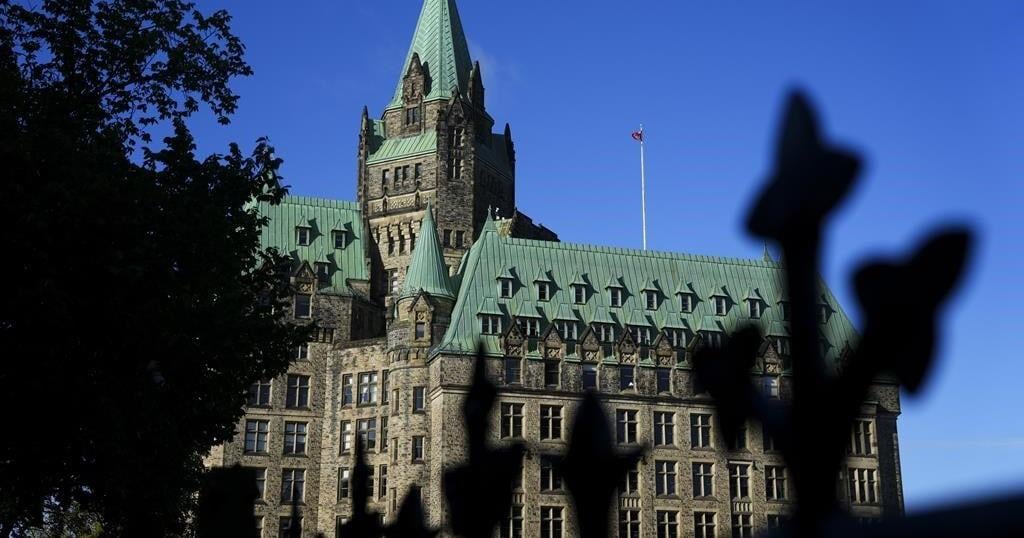The National Bureau of Economic Research (NBER)’s authoritative Business Cycle Dating Committee itself uses a two-part classification – “expansion” and “contraction”.
Economy
Recession by any other name will still reset the economy: Kemp
In reality, the business cycle is a continuum ranging from boom, rapid recovery and strong growth at one extreme through soft patches and mild recessions to severe recessions and depressions at the other.
Explaining its interest rate decisions, the U.S. Federal Reserve has characterized economic activity with phrases including “rapid,” “vigorous,” “robust,” “solid,” “moderate,” “slowed considerably” and “severe disruption.”
Growth in business activity tends to accelerate and decelerate; outright declines in the level of activity are relatively rare.
The NBER’s Business Cycle Dating Committee formally declared only six recessions between 1980 and the end of 2020.
The U.S. economy was in recession for just 58 out of 492 months (less than 12% of the time), on the NBER definition.
But there have been twice as many distinct cyclical troughs in the purchasing managers’ manufacturing index published by the Institute for Supply Management (ISM) over the same 41-year period.
These additional cyclical troughs centered on 1985, 1989, 1996, 1998, 2012 and 2016 were never formally declared as recessions by the NBER.
In the Fed’s discussions, these periods were characterized as periods of “moderate growth” or a “soft patch”.
They were periods of little or no growth in an otherwise uninterrupted business cycle expansion and tend to be forgotten.
Dissatisfaction with sluggish wage growth resulting from mid-cycle slowdowns in 2012 and especially 2016 likely contributed to the election of President Donald Trump in 2016.
Mid-cycle slowdowns also reset the economy by easing capacity constraints and relieving upward pressure on prices and wages.
The unusually long business cycle expansions of the 1980s (92 months), 1990s (120 months) and 2010s (128 months) were each punctuated by two mid-cycle slowdowns.
Mid-cycle slowdowns almost certainly helped prolong the formally declared expansions by freeing up spare capacity and taking some of the heat out of prices and wages.
Similarly, if it hadn’t been for mid-cycle slowdowns in 2012 and 2016, resetting capacity utilization and sapping inflation and wage growth, it seems likely the most recent expansion would have ended before 2020.
From an analytical viewpoint, the distinction between mid-cycle slowdowns that prolong an expansion and cycle-ending recessions is somewhat arbitrary, a difference of degree rather than nature.
For that reason, it is more useful to focus on whether the growth in business activity is accelerating or decelerating rather than whether the economy is in recession or not.
U.S. manufacturers reported activity was broadly flat in October as the merchandise and freight sector of the economy continued to lose momentum in the face of rapid inflation and excess inventories.
The ISM purchasing managers’ index slipped to 50.2 in October (30th percentile for all months since 1980) from 50.9 in September (36th percentile) and 60.8 a year ago (99th percentile).
The composite index has declined in nine of the last 12 months and is now at the lowest level since May 2020, when the economy was still in the grip of the first wave of the coronavirus epidemic.
The new orders component was below the 50-point threshold dividing expanding activity from a contraction for the fourth time in five months (“ISM manufacturing report on business”, Nov. 1).
Slower growth in manufacturing and freight is translating into slower growth in the consumption of diesel and other middle distillates.
The volume of distillate fuel oil supplied to the U.S. domestic market (a proxy for consumption) was up by less than 1% in the three months from June to August compared with the same period in 2021.
Distillate use is closely correlated with the ISM index so the continued decline in the index in September and October signals consumption growth likely slowed further.
Chartbook: Global manufacturing cycle
CYCLICAL SLOWDOWN
Between 1980 and the end of 2020, the ISM manufacturing cycle reached a distinct trough on average every 41 months or roughly every 3-4 years.
The manufacturing and freight cycle, rather than formal recessions alone, is what matters for the consumption of distillate fuel oil and other cyclical energy products.
The current downturn in the manufacturing cycle will dampen the rate of growth in distillate consumption and possibly even reduce fuel use outright.
In the United Kingdom, the European Union and China the cycle appears even more advanced, with purchasing managers’ surveys indicating activity is already falling in each case.
The Eurozone manufacturing purchasing managers’ index slipped to 46.4 in October (12th percentile for all months since 2006) and has been below 50 for four months running.
The slowdown will ripple out from the major economies at the core of the global economy (the United States, China and Europe) to the lower-value manufacturers and commodity producers on the periphery.
The cyclical slowdown will reset industrial capacity utilization, labor markets, inflation and wage growth – whether or not it results in a formal recession being declared.
Related columns:
– Recession will be necessary to rebalance the oil market (Reuters, Sept. 22)
– Oil and interest rate futures point to cyclical downturn before end of 2022 (Reuters, July 22)
– Global business cycle starts to turn down (Reuters, June 30)
– Diesel is the U.S. economy’s inflation canary (Reuters, Feb. 9)
John Kemp is a Reuters market analyst. The views expressed are his own (Editing by Tomasz Janowski)
Economy
Opinion: Bond markets are signalling trouble for the American economy – The Globe and Mail
[unable to retrieve full-text content]
Opinion: Bond markets are signalling trouble for the American economy The Globe and Mail

Source link
Economy
PBO projects deficit exceeded Liberals’ $40B pledge, economy to rebound in 2025

OTTAWA – The parliamentary budget officer says the federal government likely failed to keep its deficit below its promised $40 billion cap in the last fiscal year.
However the PBO also projects in its latest economic and fiscal outlook today that weak economic growth this year will begin to rebound in 2025.
The budget watchdog estimates in its report that the federal government posted a $46.8 billion deficit for the 2023-24 fiscal year.
Finance Minister Chrystia Freeland pledged a year ago to keep the deficit capped at $40 billion and in her spring budget said the deficit for 2023-24 stayed in line with that promise.
The final tally of the last year’s deficit will be confirmed when the government publishes its annual public accounts report this fall.
The PBO says economic growth will remain tepid this year but will rebound in 2025 as the Bank of Canada’s interest rate cuts stimulate spending and business investment.
This report by The Canadian Press was first published Oct. 17, 2024.
The Canadian Press. All rights reserved.
Economy
Statistics Canada says levels of food insecurity rose in 2022

OTTAWA – Statistics Canada says the level of food insecurity increased in 2022 as inflation hit peak levels.
In a report using data from the Canadian community health survey, the agency says 15.6 per cent of households experienced some level of food insecurity in 2022 after being relatively stable from 2017 to 2021.
The reading was up from 9.6 per cent in 2017 and 11.6 per cent in 2018.
Statistics Canada says the prevalence of household food insecurity was slightly lower and stable during the pandemic years as it fell to 8.5 per cent in the fall of 2020 and 9.1 per cent in 2021.
In addition to an increase in the prevalence of food insecurity in 2022, the agency says there was an increase in the severity as more households reported moderate or severe food insecurity.
It also noted an increase in the number of Canadians living in moderately or severely food insecure households was also seen in the Canadian income survey data collected in the first half of 2023.
This report by The Canadian Press was first published Oct 16, 2024.
The Canadian Press. All rights reserved.
-

 News8 hours ago
News8 hours agoFreeland says she is ‘absolutely confident’ Liberal MPs still support Trudeau |
-

 News8 hours ago
News8 hours agoTobacco victims hail ‘historic’ $32.5-billion deal |
-

 News8 hours ago
News8 hours agoThe NDP, B.C. Conservative leaders vie for votes ahead of Saturday’s election
-

 News10 hours ago
News10 hours ago‘Hateful and mean’: LGBTQ+ advocates slam Sask. Party’s proposed change room policy
-

 News10 hours ago
News10 hours agoWhere will B.C.’s election be won or lost? Here are five bellwether ridings to watch
-

 News10 hours ago
News10 hours agoFearing demolition, Montreal skateboarders rally to protect DIY skatepark from city
-

 News10 hours ago
News10 hours agoVoters head to the polls today in Halifax and other Nova Scotia municipalities
-

 News10 hours ago
News10 hours agoB.C. voters face a once-unthinkable election choice, after stunning rise of Rustad





















